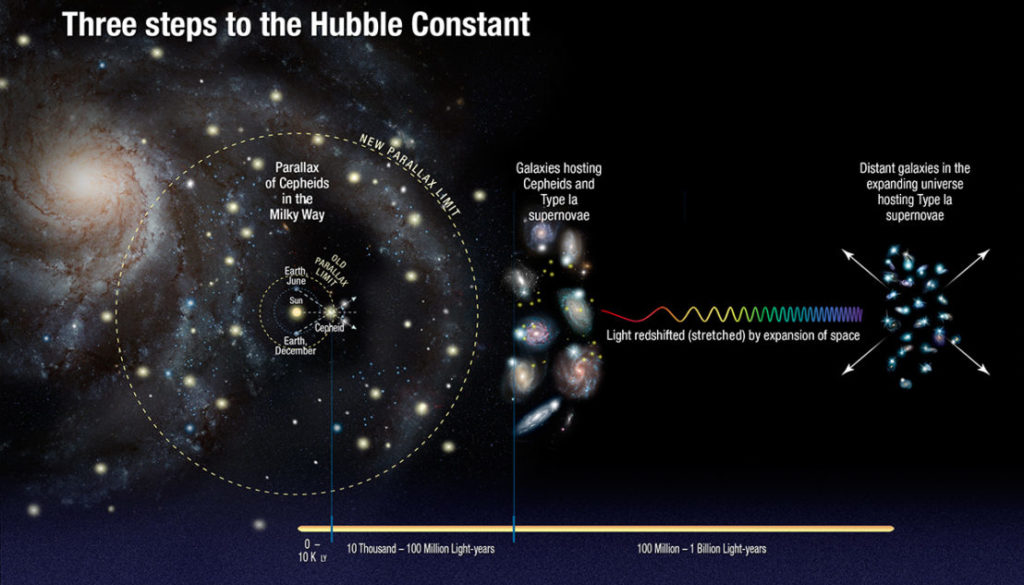NASA’s Hubble Finds Universe Expanding Faster Than Expected
BALTIMORE —
A team of astronomers including four from Texas A&M University has discovered that the universe is expanding 5 to 9 percent faster than expected, based on observations with the Hubble Space Telescope.
The surprising result, to be detailed in an upcoming issue of The Astrophysical Journal, represents the most recent advance in a thus-far 11-year study by the SH0ES (Supernova Ho for the Equation of State) Team, founded in 2005 by Nobel Laureate Adam Riess of the Space Telescope Science Institute and The Johns Hopkins University and Texas A&M’s Lucas Macri, an associate professor in the Texas A&M Department of Physics and Astronomy and member of the George P. and Cynthia Woods Mitchell Institute for Fundamental Physics and Astronomy since 2008.

This Hubble Space Telescope image shows one of the galaxies in the survey to refine the measurement for how fast the universe expands with time, called the Hubble constant. The galaxy, UGC 9391, contains two types of stars astronomers use to calculate accurate distances to galaxies, a key measurement in determining the Hubble constant. The red circles mark the locations of Cepheid variable stars, while the blue “X” at bottom right denotes the location of supernova 2003du, a special class of exploding star called a Type Ia supernova.. (Credit: NASA, ESA and A. Riess, STScI / JHU.) 
Dr. Peter Brown 
Dr. Samantha Hoffmann



The post NASA’s Hubble Finds Universe Expanding Faster Than Expected appeared first on College of Science.
